Solar Agriculture and Solar Farm Irrigation System Application Guide
Advancing agricultural automation drives rising demand for off-grid solar power systems on farms, enabling energy-independent operations, reducing grid reliance, and supporting sustainable practices with clean energy solutions.
The Current Status and Future of Solar Agriculture and Solar Farm Irrigation System
The global off-grid agricultural and solar farm power system market is expanding rapidly, with a market size exceeding US$12 billion in 2023 and an annual growth rate of approximately 15%. Developing countries (such as those in Africa and the Asia-Pacific region) are the primary growth areas due to significant electricity shortages, while developed countries are accelerating their expansion through policy subsidies. It is projected that the market size will surpass 30 billion USD by 2030, with a CAGR exceeding 12%. Technological innovation, climate policies, and cost reductions are the core drivers of this growth; however, initial investment and operational barriers continue to hinder widespread adoption in certain regions.
The Impact of Off-Grid Solar Energy Storage Power Generation Systems on Farms
The widespread adoption of solar power systems marks a transformative era in modern agriculture, enabling numerous farms to achieve complete energy independence through off-grid operations. By integrating photovoltaic arrays with advanced energy storage solutions, agricultural enterprises can maintain 24/7 operation of critical infrastructure including climate-controlled greenhouses, automated irrigation systems, intelligent lighting networks, refrigerated storage facilities, and on-site processing lines. This renewable energy paradigm not only replaces increasingly expensive grid electricity with cost-free solar power but also eliminates emergency fuel expenditures for backup generators during outages. Consequently, farm operators are experiencing sustainable profit growth through optimized energy expenditure structures, while establishing resilient, eco-friendly production models immune to energy price fluctuations.
System Design and Configuration Plan
Typical Application Scenarios
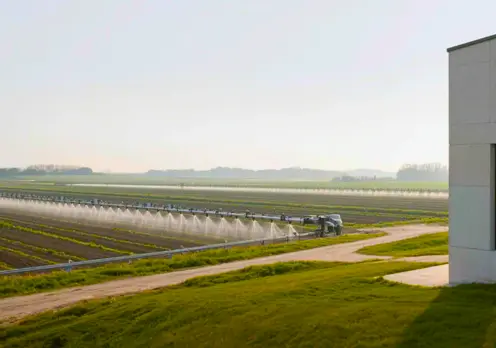
Irrigation System Power Supply
Requirements Analysis
Pump power (e.g., 0.5 kW–10 kW), daily operating hours (4–8 hours), seasonal load fluctuations (high load during dry season).
Key points of the plan
- Use a 12kW hybrid inverter to drive a deep well pump and supply power to all circuits in the entire irrigation pipeline.
- Battery capacity needs to cover periods without sunlight (such as nighttime irrigation, where some crops require nighttime lighting). It is recommended to use lithium iron phosphate batteries with a high cycle life.
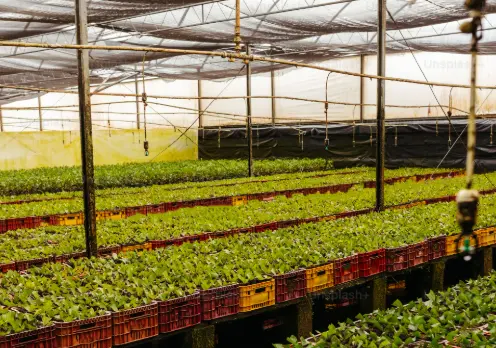
Greenhouse/farm temperature control
Requirements Analysis
Constant temperature equipment (fans, heaters), humidity control, CO₂ replenishment systems, etc. operate around the clock.
Key points of the plan
- The inverter must support soft start functionality to avoid instantaneous impact on motor loads.
- The battery pack configuration must cover continuous rainy days (e.g., 3 days of energy storage redundancy).
- We recommend a hybrid inverter + large-capacity lithium iron phosphate solar lithium battery.
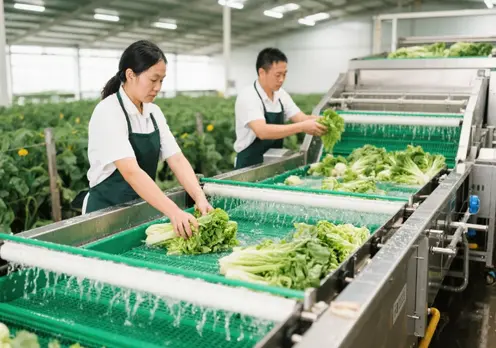
On-site Processing
Requirements Analysis
Flexible cleaning machines, high-pressure cleaning machines, vibrating screens, optical sorting machines, weighing and packaging lines, etc.
Key points of the plan
- Select an inverter with high overload capacity that can withstand motor start-up shocks.
- Design with 1.2 times redundancy based on peak load (e.g., 20kW peak load → 24kWh energy storage).
- Prioritize south/equatorial orientation, adjust tilt angle according to local latitude to maximize daytime power generation.
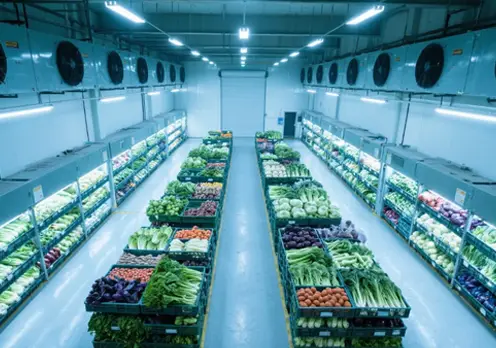
Cold Storage Warehousing
Requirements Analysis
Cold storage compressors, pre-cooling tunnels, constant temperature and humidity controllers, packaging area lighting. Continuous 24-hour operation, sensitive to temperature and humidity fluctuations (±1°C error may result in losses).
Key points of the plan
- Choose a pure sine wave inverter (to avoid harmonic interference with precision temperature control equipment). We recommend our hybrid inverter, which supports seamless switching between mains power, battery power, photovoltaic power, and chemical generators to ensure continuous power supply.
- Pair it with our large-capacity deep-cycle battery (customization available).
System Configuration Guide
Capacity calculation formula
Photovoltaic capacity formula
Total photovoltaic power (kW) = Daily electricity consumption (kWh) / (Local average peak sunshine hours per day × System efficiency 0.8)
Battery capacity formula
Battery capacity (kWh) = Daily power consumption × Number of days of power supply required / (Depth of discharge DOD × Inverter efficiency 0.9)
Component Selection Comparison Table
| Scene | Inverter | Battery | PV Array |
|---|---|---|---|
| Small irrigation system | 5kW Off-Grid Inverter | 48V 560Ah LFP Battery | 6kW monocrystalline module (12 pieces of 500W) |
| Greenhouse | 10kW Hybrid Inverter × 2 | 48V 560Ah LFP Battery × 4 | 30kW double-sided double-glass module |
| Processing Plant | 10kW Hybrid Inverter × 6 | 48V 560Ah LFP Battery × 8 | 80kW tracking bracket system |
Extensible Design
- Modular Battery Stacking: Supports Parallel Expansion.
- Photovoltaic array reserved interface: Pre-installed connection points on the bracket for easy addition of components at a later date.
- Multi-inverter parallel connection: Multiple inverters are synchronized via CAN bus.
Typical Case Analysis
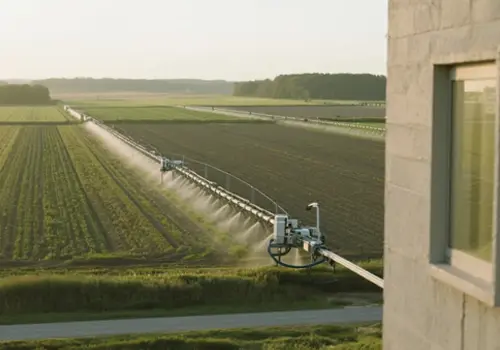
Smart irrigation system for arid regions (Mexico)
System Configuration
- Inverter: 10kW off-grid type ×2 (redundant design).
- Battery: 48V 560Ah LFP battery pack ×3 (total capacity 86kWh).
- Photovoltaic: 540W monocrystalline modules ×40 (21.6kW array).
Operational Performance
- Irrigate for 8 hours daily, replacing diesel generators and saving $12,000 in fuel costs annually.
- The system has been operating without failure for two years, with a battery capacity retention rate of over 95%.
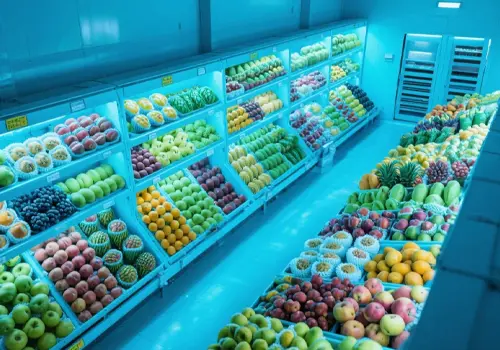
Tropical Fruit and Vegetable Cold Storage Center (Thailand)
System Configuration
- Inverter: 10kW hybrid solar inverter ×4 (Grid-connect Complementary).
- Battery: 48V 560Ah lithium iron phosphate solar battery × 4 (total 107kWh).
- Photovoltaic: Double-sided double-glass modules ×120 (62.4 kW, roof + ground installation).
Operational Performance
- Cold storage temperature fluctuations have been reduced from ±3°C to ±0.5°C, reducing fruit and vegetable losses by 15%.
- Peak-valley electricity price arbitrage + solar power generation, with an investment payback period of 3.8 years.
OEM & ODM Off-Grid Agricultural and Solar Farm Power Supply System Solutions 🔧
Core Cooperation Advantages
Directly supplied from the factory, optimal cost
- Own production line (monthly production capacity of 50,000 inverters + 50,000 battery packs), no middleman markups.
- Flexible OEM/ODM support: private label manufacturing (brand logo, packaging customization), addition or removal of functional modules (such as remote monitoring interfaces), and exterior design adjustments.
Precisely tailored to small and medium-sized agricultural scenarios
- Focusing on off-grid/hybrid inverters and small-scale energy storage systems, covering scenarios such as family farms, small processing plants, and distributed cold storage facilities.
- Scene customization: Adjust output power, battery capacity, and communication protocols (RS485/CAN/4G) according to customer requirements.
Fast delivery and certification assurance
- Delivery time: Standard products are shipped within 7 days, customized solutions within 15-30 days (expedited service available).
- Certification: CE, IEC, RoHS full series certification, supporting customer localization certification (such as UL, FCC).
Product Range and Customization Capabilities
Solar Inverter
| Type | Power Range | Customization Options | Typical Application Scenarios |
|---|---|---|---|
| Off Grid Solar Inverter | 1~10kW | Waterproof housing, Bluetooth monitoring, multi-machine parallel connection | Small-scale irrigation, greenhouse lighting |
| Hybrid Solar Inverter | 5~12kW | Intelligent power switching, intelligent load, pure sine wave | Processing equipment, small cold storage, temperature control for livestock farms |
Solar Lithium Battery
| Type | Capacity Range | Customization Options | Typical Application Scenarios |
|---|---|---|---|
| 24V Solar Lithium Battery | 2.5kWh~7.6kWh | Wall-mounted/rack-mounted, WiFi/Bluetooth, BMS, temperature control | Compact design, suitable for family farms |
| 48V Solar Lithium Battery | 5.2kWh~28.6kWh | Parallel connection, mobile mode, battery cell | Processing equipment, farmland, disaster response |
All in one Home Battery Backup System (Built-in Inverter)
| Type | Power Range | Capacity Range | Customization Options | Typical Application Scenarios |
|---|---|---|---|---|
| Stacked Home Battery Backup | 5kW~25kW | 5kWh~25kWh | Stacking design, interfaces, protocols | Emergency power supply, temporary mechanical power supply |
| All in one Home Battery Backup | 3kW~5kW | 5kWh | Parallel connection, mobile mode, battery cell | Lighting power supply, temporary power supply |
Customizable features
- Hardware adjustments: terminal type (MC4/Anderson), heat dissipation structure (natural cooling/forced air cooling).
- Software customization: battery management strategy (cycle mode/standby mode), communication protocol integration (access to customer’s existing platform).
- Brand packaging: outer box printing, instruction manual language, accessory labeling (full-process invisible brand OEM).
Cooperation Process
- Requirement Confirmation: The customer provides the target market (e.g., Southeast Asia/Africa), application scenarios (irrigation/processing), and certification requirements.
- Solution Design: Our technical team will provide a configuration list (including inverter + battery + solar panel recommendations) within 3 working days.
- Sample Confirmation: Develop samples based on requirements and provide parameter adjustment support.
- Mass Production: Minimum order quantity of 100 units (with flexible delivery schedules), and real-time production progress tracking system provided.
- After-Sales Support: Global logistics collaboration (EXW/FOB/DDP) and localized after-sales team coordination.
Cooperation Policy
Technical Support
- Provide technical training manuals, installation videos, and 3D models.
- Support for remote training and on-site training
- 24/7 technical online support
After-sales Commitment
- Five-year warranty
- 48-hour fault response
- Quick and free replacement for quality issues
